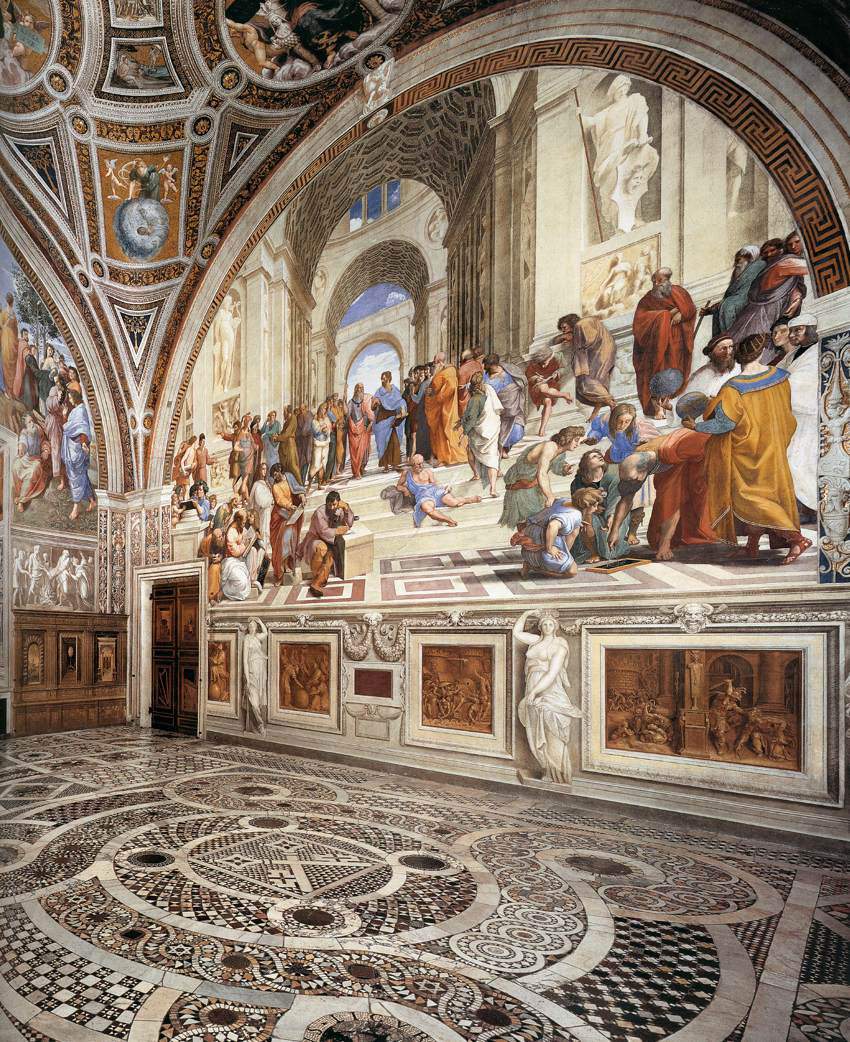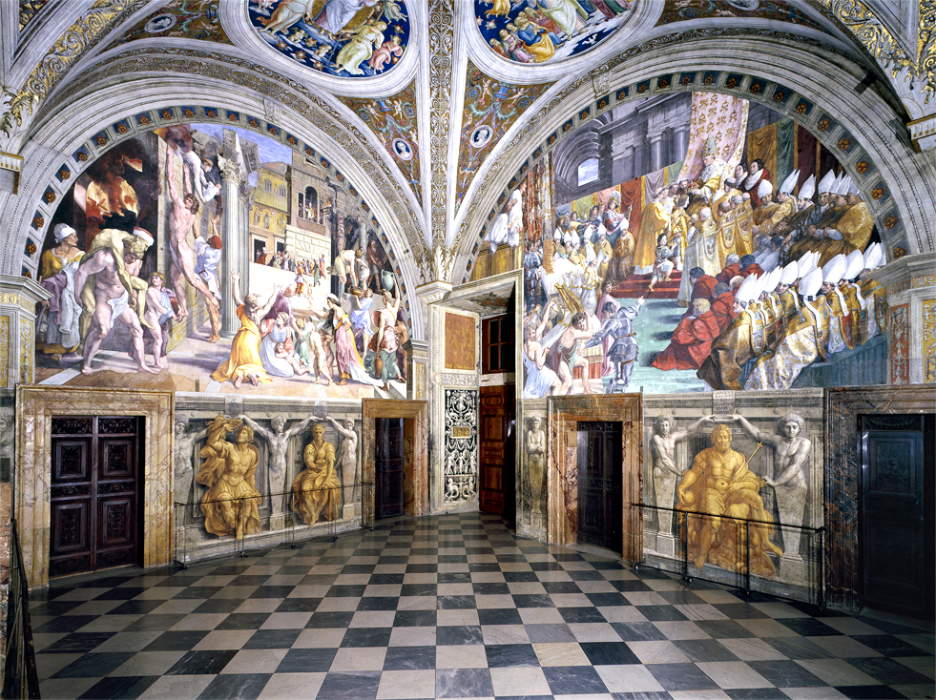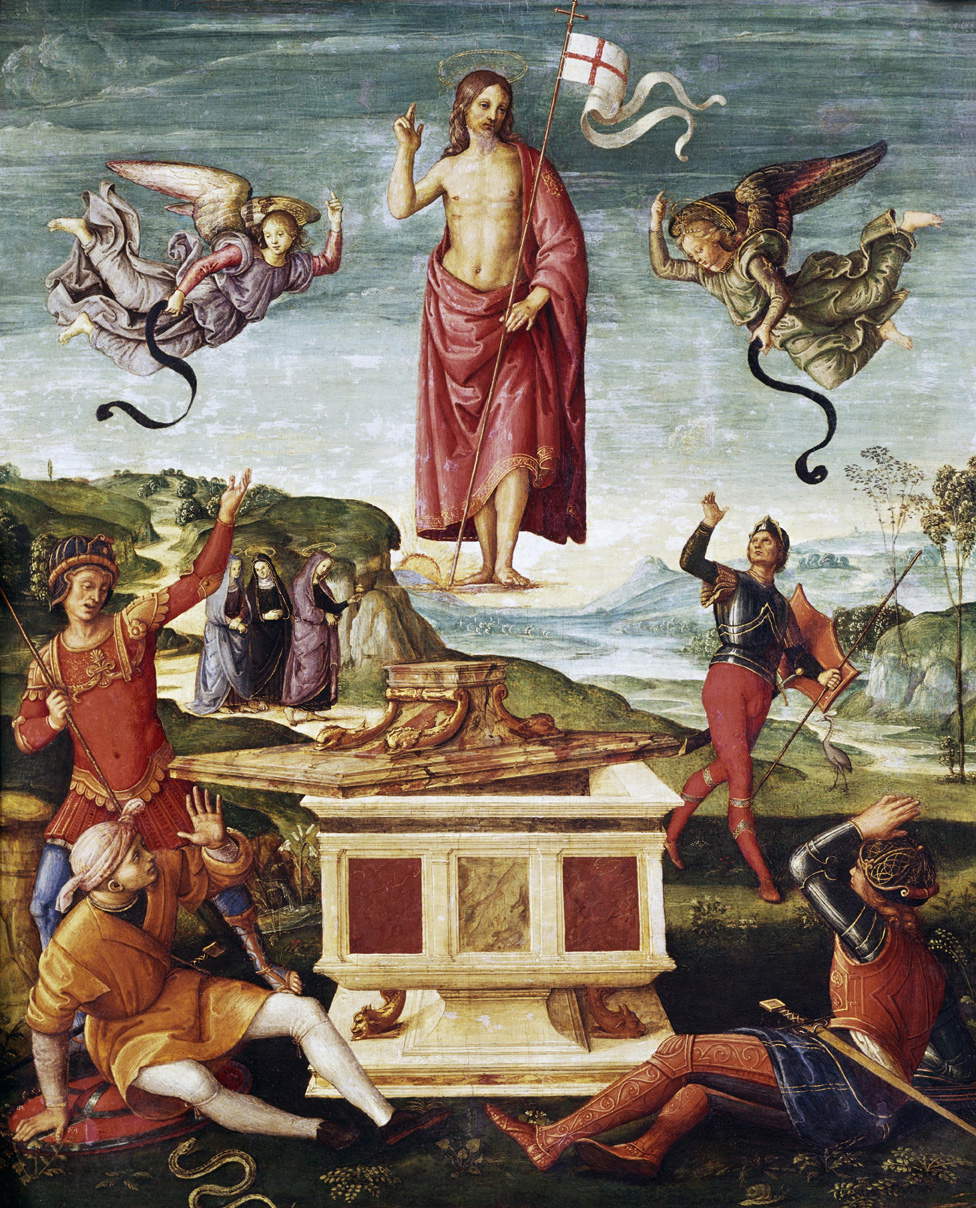The recently concluded five-hundredth anniversary of Raphael has not been short of opportunities to bring to the public’s attention even the critical fortune that the Urbino, for centuries, has known almost interrupted, and in this sense one of the best-known judgments on Raphael is that of the young Roberto Longhi, often used as a sort of cudgel against the vulgate according to which everyone likes Raphael, and just as often misunderstood in the context of inane attempts to confuse taste with history: in other words, if it is entirely legitimate not to like Raphael and not to find him suited to one’s own chords, for whatever reason, it is difficult not to recognize his greatness and prominent position within a history of art that for five hundred years now has continued to take him as a model. Longhi’s considerations on Raphael are not isolated to that single, sharp, seemingly peremptory youthful foray contained in Breve ma veridica storia della pittura italiana, but flow over a span of almost sixty years, which in addition to the 1914 text includes other fundamental passages. To retrace Longhi’s Raphael, it is therefore appropriate to consider at least two other texts, in addition to the youthful dispensation, to compose an itinerary that unravels across a forty-year period: the usual and stainless Officina ferrarese, additions included, and an article published in 1955 in Paragone, entitled Percorso di Raffaello giovine.
The judgment of the twenty-four-year-old Longhi writing Breve ma veridica storia for the students of his high school class is well known, and it is preceded by equally sharp considerations that the critic reserved for the Urbino in an article, Rinascimento fantastico, published in an issue of La Voce in 1912, but which in substance are not far from those that Longhi would formulate two years later. Raphael, for the young art history teacher Longhi, is a “coarser and more effectual psychologist” than Leonardo, he is an artist who “does not belong precisely to the ranks of pure painters but to the graphic illustrators of ideals of life,” his is “figurative literature, not painting, worthy of respect and even admiration only for the nobility and dignity in the choice of ideals to illustrate in comparison with the baseness into which most of today’s illustrators fall.” These words, which at first might appear as veiled in deep dislike, should be put in relation, first, to Longhi’s ideas about art and, second, to the cultural and intellectual climate in which the young Longhi was writing. In the introduction to Breve ma veridica storia (Short but True History), Longhi is clear: painting and poetry are situated on two distant planes, having in common only the spiritual process of creation, but differing in the field of reality that interests them: “while the poet transfigures by means of language the psychological essence of reality, the painter transfigures its visual essence: feeling for the figurative artist is nothing other than seeing, and his style, that is, his art, is all built on the lyrical elements of his vision.” The logical consequence of this statement is the separation of art and everyday life: the subject, for Longhi, “has no value in figurative art.” The formalist Longhi, the purevisibilist Longhi (and such he would remain throughout his career), the Longhi who therefore has a consideration of painting that is far removed from today’s public sensibility, which when observing a work is used to looking for plots rather than senses and stories rather than harmonies of forms, lines and colors, could not love the Raphael who, in his opinion, subordinated compositions to the subject: a characteristic that, for Longhi, essentially represented a kind of defect.
The words on Raphael then exude Longhi’s deeply vocal and anti-passatist impatience with that Academy which, for centuries, saw in the “divin painter” an unshakable pillar, a reference of perfection: in the same introduction to the Bur edition of the Breve ma veridica storia, Cesare Garboli recalled how, between 1910 and 1915, modern art in Italy could be summed up simply with one word, “revolution,” which included the concepts of novelty, liquidation of the past, rejection of traditions, overthrow of habitual ways of thinking, and revolution which, Garboli wrote again, Longhi “had espoused” and was decisive in leading him to his formalist passion. Traiter la nature par le cylindre, la sphère, le cône, had established Cézanne: this is the culturalhumus in which the young Longhi germinated. However, his intemperate iconoclasm is destined not to endure over time with the same resolute sharpness that distinguishes his youthful writings. And in TheFerrara Workshop, which follows the Short but True History by exactly twenty years (with additions dating instead to 1940), Raphael’s relevance is not questioned. Raphael, painter of Rome triumphant in the recovery of its Latin grandeur, was for Longhi the inventor of Roman ideas in the “supreme decade between ’10 and ’20,” the author of “that most meditated emulsion, first between the various Italian idioms, then between Latinity and Italianity, between history and nature, which sometimes seems to the simple-minded an easy accommodation and is instead a pinnacle of taste and genius before which the Florentines expire of universal validity, rividentan province like Andrea del Sarto or, by dramatic salvation, like Michelangelo, must throw themselves into the polemic of titanism, of the world as ’torso’.”
 |
| The Stanza della Segnatura |
 |
| The Stanza dellIncendio di Borgo |
 |
| Raphael (attributed), Resurrection (1501-1502; oil on panel, 52 x 44 cm; São Paulo, Brazil, Museu de Arte de São Paulo) |
It is obvious what, for Longhi, is the main merit of the mature Raphael, the Raphael of the Vatican Rooms, a merit that is highlighted in a few, icastic words: he is the only artist of his time to develop a language that is not (obviously) dialectal, nor even a mélange, albeit cultured and up-to-date, of regional idioms, but is the universal and solemn language of the rediscovered humanistic greatness of ancient Rome, a language that a Raphael not even thirty years old mastered with surprising mastery just shortly after his arrival in the city. A virtue that was certainly not recognized the day before yesterday: as early as the seventeenth century, Giovanni Battista Agucchi placed Raphael at the head of the so-called Roman school in his system of classifying the schools of Italy (Agucchi placed Michelangelo alongside him, by mistake according to Lanzi, since Michelangelo will always remain intrinsically and inexorably Florentine: one may, of course, raise the objection that Agucchi was writing from an anti-Florentine perspective, but the elements of solemnity and renewed grandeur of the ancient that characterize the so-called “Roman school” disregard individual positions). Many may dislike the Raphael of the Stanza della Segnatura, but what the Urbino achieves in the frescoes for Julius II is a “pinnacle,” to use Longhi’s own term, that for its historical and artistic import cannot be questioned.
We finally arrive at the 1955 article, which instead highlights the merits of the young Raphael: a text of particular merit, if we consider that Raphael’s painting was outside Roberto Longhi’s closest interests. In this essay, which belongs to the last track of the Piedmontese art historian’s career and which opens with a polemic against Oskar Fischel, on whom Longhi does not fail to pour out his fierce sarcasm, he does not fail to give an account of how prone to experimentation and innovation the young Raphael was, according to a mode of operation that would later distinguish his mature works: commenting on the Resurrection in the Museum of São Paulo, Brazil, a painting that Raphael executed when he was sixteen or thereabouts, Longhi defined the artist as the “’first of the class’ Perugian who makes the master astonished, though without betraying the rules,” an artist capable of bringing together “ancient and new, distant and yet measured space, and close caress of form.” And even later works from the Umbrian period, such as the Pala Colonna or the Pala Ansidei, are “already tangential in some way to the early Florentine period.” Many of the proposals that Longhi put forward in The Path of Raphael as a Young Man have not then been followed up and have been radically revised: a recent study by Anna Maria Ambrosini Massari, in 2017, has nevertheless reaffirmed the robust solidity of the framework of that essay, which illuminated the young Raphael’s links with Perugino and made clear the artist’s aptitude from the very beginning of his career. Always without giving in to easy mythologizing or the cult of genius-a rhetoric, that is, that Longhi held in contempt throughout his career.
Warning: the translation into English of the original Italian article was created using automatic tools. We undertake to review all articles, but we do not guarantee the total absence of inaccuracies in the translation due to the program. You can find the original by clicking on the ITA button. If you find any mistake,please contact us.